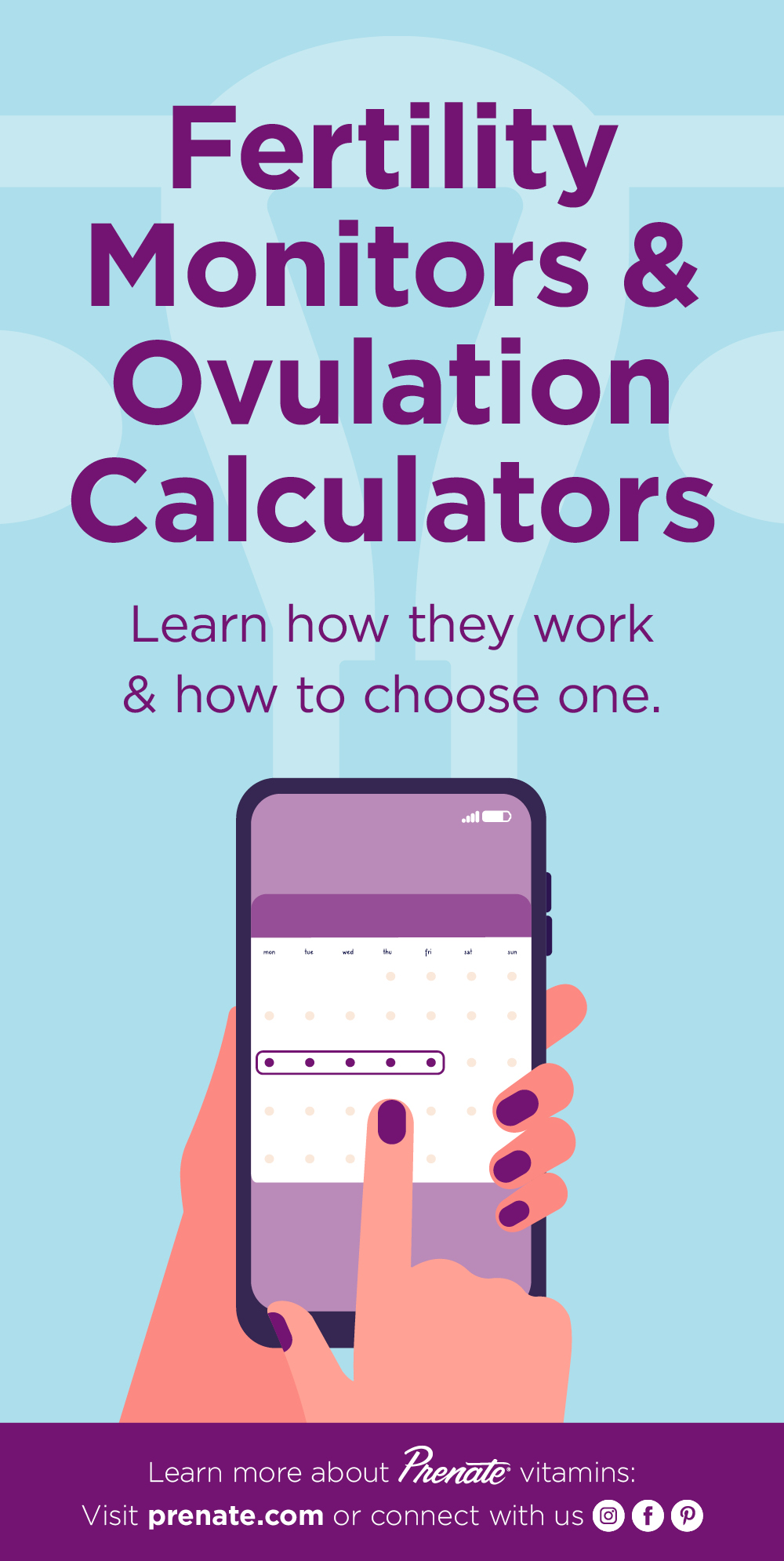In the Market for Fertility Monitors and Ovulation Calculators?
July 19, 2021
From the moment you decide you’re ready to be a parent, your exciting pregnancy journey begins! For many new moms-to-be, that journey starts by knowing when you’ve entered that six-day window of fertile opportunity. To track ovulation in preparation for conception, some women use a fertility monitor or an ovulation calculator. Here is an overview of how each works and its effectiveness, as well as tips for choosing which one to use.What’s the Difference Between the Two?
An ovulation calculator estimates how likely you are to release an egg on a particular day in your menstrual cycle, while a fertility monitor lets you know the days that you are more likely to get pregnant during intercourse. Both can help you maximize your chances of getting pregnant.
Ovulation calculators work by taking the first day of your last period and the length of your menstrual cycle to give a range of days when you may release an egg.
Fertility monitors detect the surge in the luteinizing hormone (LH) that typically occurs 24 hours to 48 hours before ovulation. That surge of hormone triggers ovulation, which is the discharge of a mature egg from the ovary.
After an egg is released, it only survives for up to 24 hours if it’s not fertilized, so knowing when you ovulate allows you to try to time conception.
Effectiveness
When it comes to ovulation calculators, there is no accuracy guarantee since the methodology is based on averages and varying cycles. Fortunately, ovulation calculators don’t have to pinpoint an exact date, just a nice healthy range of possibly fertile days.
Fertility monitoring tests, when used correctly, can detect with 99% accuracy the LH surge that paves the way for ovulation. Keep in mind that just detecting the surge of LH doesn’t mean ovulation actually will happen over the next 48 hours.
Finding the Right Fertility Monitor & Ovulation Calculator
Calculating ovulation doesn’t have to be high-tech. The calendar method, or standard days method, is very popular. The U.S. Department of Health and Human Services Office on Women’s Health offers a simple-to-use online ovulation calendar that gives you a six-day fertility window as well as an estimation of your likely ovulation date. You can also try those available on the American Pregnancy Association or March of Dimes website.
Staying on top of your ovulation may sound a bit time consuming, but there are several devices and resources to help make tracking easy and maybe a little fun! From wearable trackers to smartphone apps, to strips, to a combined pregnancy test kit, there is a fertility monitor or tracking device to suit any soon-to-be mom’s need.
Keep in mind that fertility monitoring and ovulation calendars are more effective when you can check your chart and cycles every day. Enjoy the journey!
Prenate® Vitamin Family
This post is brought to you by the Prenate® Vitamin Family, a line of prescription prenatal supplements designed to enhance preconception, prenatal, and postpartum nutrition in women. Talk with your doctor about how taking a daily prescription prenatal or postnatal vitamin could help support a healthy pregnancy and postpartum wellness.
You Are About To Leave This Website
By clicking continue, this link will take you to a website to which Alora Pharmaceuticals Policies & Terms of Use do not apply. Alora and its subsidiaries do not control the content or accuracy of third-party websites and assume no responsibility for their use.











